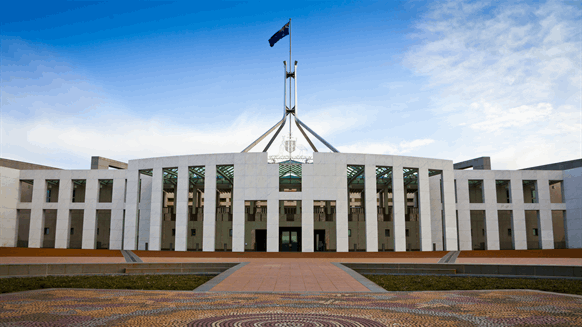Gas prices in Australia have already risen 400 percent above normal levels by 2022, and this year’s winter is just around the corner.
Rich and commercially attractive gas resources, a stable investment environment and a trusted LNG supplier – Australia’s reputation in the global gas industry has rarely been rivaled for decades. However, today the country is in the middle of an energy crisis.
The government’s response is intervention. Blaming rising energy bills for the conflict in Ukraine, the Albanian administration last month announced “responsible and meaningful action on gas prices” in eastern Australia. What this means is a temporary price cap set at $7.70/mmbtu for the next 12 months for non-contracted gas in the wholesale market.
Nobody likes high energy prices, and gas buyers and consumer groups have welcomed the price cap. But markets exist for a reason. This will exacerbate future gas shortages and likely increase prices rather than have the opposite effect. The once unthinkable specter of energy rationing is now thinkable, Wood Mackenzie believes.
Northeast Asian LNG buyers will be having sleepless nights over the prospect of Australia’s gas supply guarantee mechanism becoming a more concrete domestic market obligation. Japan has already asked for reassurance that this will not happen.
But the finger cannot be pointed only at the government. While the gas price cap has been met with derision by the gas industry, it is a crisis that has been around for a long time. Domestic producers themselves have struggled to find solutions, passively taking the blame for rising prices.
How did eastern Australia get into this crisis?
It’s no secret that the East Coast market is structurally undersupplied with gas. And unlike Europe, where high prices and demand management efforts have helped reduce non-electric demand, East Coast gas demand is sticky. New supply is still needed in power generation and industry.
But this supply is scarce on the ground. For East Coast producers such as Santos, Beach Energy, Cooper and Arrow Energy, it’s not about the resource, it’s about overcoming strict ESG requirements and increased activism to access capital. In simpler times, more than a tcf of new East Coast supply would be sanctioned over the next few years. But this seems challenging without much more visible government support.
What does this mean for future prices?
If LNG imports drive the domestic gas price, long-term gas prices will be well above the $7.70/mmbtu cap, and more volatile, unless material new supply is sanctioned.
While the price cap excludes new supply from undeveloped fields, that doesn’t mean things can’t change. Pre-FID projects such as Narrabri and those in the Beetaloo and Gippsland basins would appear increasingly marginal with the prospect of further market intervention.
Can’t you light up eastern Australia with less gas?
Australia requires gas for power generation as well as other industrial uses such as mineral processing, mining, chemical production and fertiliser. Gas is also essential to reduce the demand for coal in energy and to support intermittent renewable energies. Simply adding more wind and solar won’t change that.
With LNG imports likely delayed until at least the mid-2020s as Europe relies on uncontracted supply, underinvestment in domestic supply could also mean more emissions, as less gas equals more coal. There is simply no immediate alternative.
Is the maximum price a sign of things to come?
Across the industry, the sentiment is clear that gas price caps will reduce investment; a cost plus system does not work for the risk profile of gas projects. And the fear of many is that an interventionist approach will sow the seeds of a bigger crisis down the road, to which policymakers see the solution as yet more intervention. Australia was already a difficult place to sanction gas projects, although the erosion of market forces will not improve this.
How will this affect Australia’s image as a reliable gas partner?
For many foreign partners and investors, the willingness of the Australian government to intervene in the domestic gas market with minimal consultation with the industry is unsettling. Some may reassess the country’s risk profile, notably Australia’s major LNG buyers.
What should happen next?
Due to the construction time of the gas projects, there will not be significant additional gas supply in the coming years. Despite this, the government can work with suppliers to demonstrate that gas has a role to play in Australia’s energy transition. Removing barriers to new gas projects to ensure there is enough gas for heating, power and industry will help lower energy prices in the long term.
It should also enable emissions to be reduced if coal-fired power stations close and industry switches from higher emission sources such as diesel/diesel to gas. The alternative is to subsidize Australians to move away from natural gas cooking and heating. Neither policy will be politically easy, as opposition to any new oil and gas projects continues to mount, and subsidizing residential moves away from gas will not be cheap.
But this is not just about the government. Woodmac believes that gas consumers must clearly articulate their gas requirements up to 2050. And producers must act in concert, highlighting to government and the general public that it is precisely the investment shortfall that is causing prices to rise. If producers want less intervention in the short term, doing nothing is not an option.
What will happen over the next 12 months and beyond remains uncertain, the company said. But the misalignment between government, producers and consumers is clear and it would be incredible if all the necessary future investments survive unscathed. The sky is not yet falling on the East Coast gas market, but unless key stakeholders address the underlying structural causes of high prices, Australia’s energy crisis is bound to continue.
To contact the author, send an email to bojan.lepic@rigzone.com


